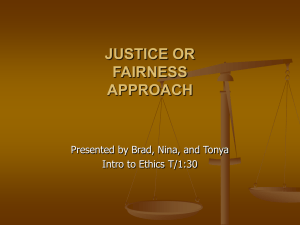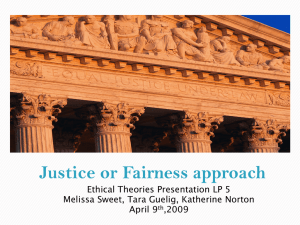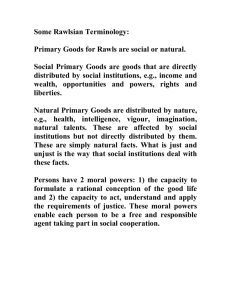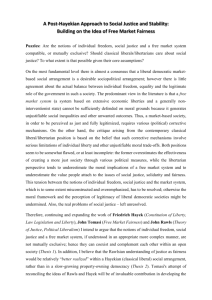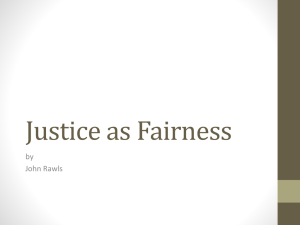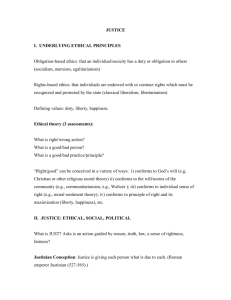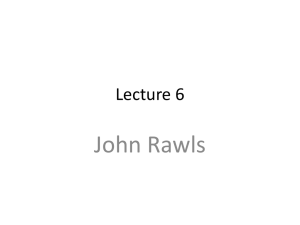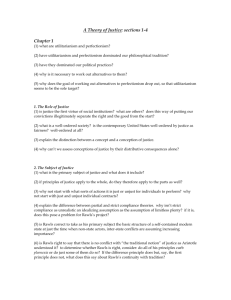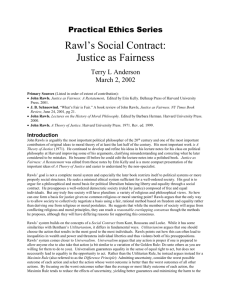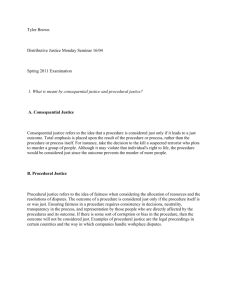Rawls Justice as Fairness
advertisement
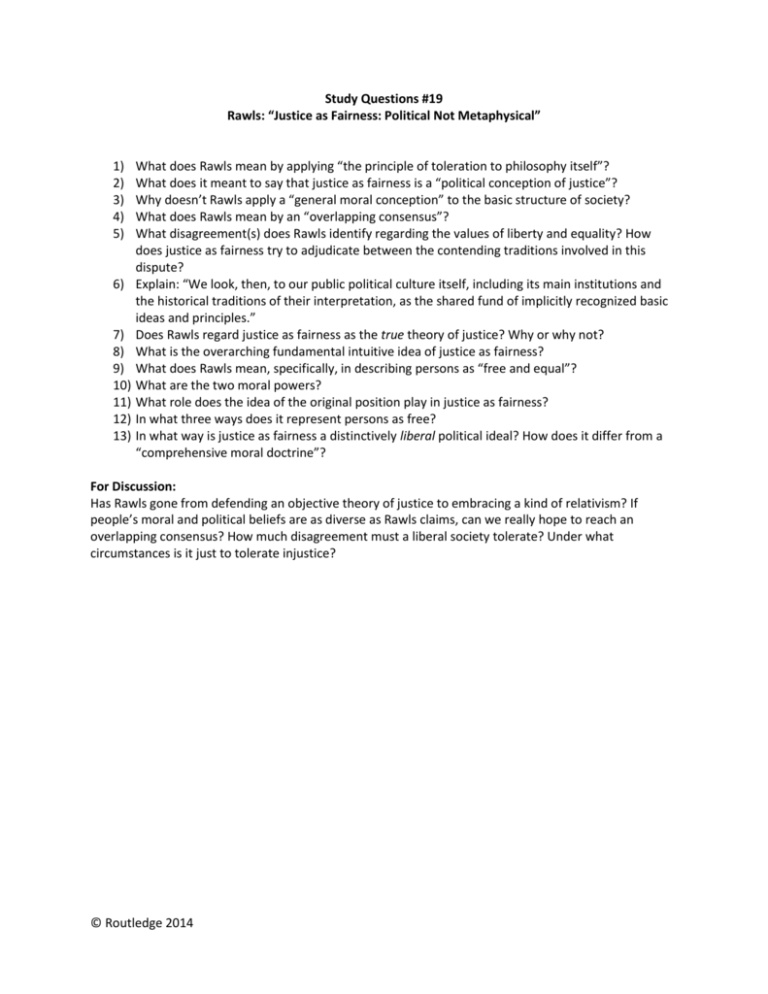
Study Questions #19 Rawls: “Justice as Fairness: Political Not Metaphysical” 1) 2) 3) 4) 5) 6) 7) 8) 9) 10) 11) 12) 13) What does Rawls mean by applying “the principle of toleration to philosophy itself”? What does it meant to say that justice as fairness is a “political conception of justice”? Why doesn’t Rawls apply a “general moral conception” to the basic structure of society? What does Rawls mean by an “overlapping consensus”? What disagreement(s) does Rawls identify regarding the values of liberty and equality? How does justice as fairness try to adjudicate between the contending traditions involved in this dispute? Explain: “We look, then, to our public political culture itself, including its main institutions and the historical traditions of their interpretation, as the shared fund of implicitly recognized basic ideas and principles.” Does Rawls regard justice as fairness as the true theory of justice? Why or why not? What is the overarching fundamental intuitive idea of justice as fairness? What does Rawls mean, specifically, in describing persons as “free and equal”? What are the two moral powers? What role does the idea of the original position play in justice as fairness? In what three ways does it represent persons as free? In what way is justice as fairness a distinctively liberal political ideal? How does it differ from a “comprehensive moral doctrine”? For Discussion: Has Rawls gone from defending an objective theory of justice to embracing a kind of relativism? If people’s moral and political beliefs are as diverse as Rawls claims, can we really hope to reach an overlapping consensus? How much disagreement must a liberal society tolerate? Under what circumstances is it just to tolerate injustice? © Routledge 2014

